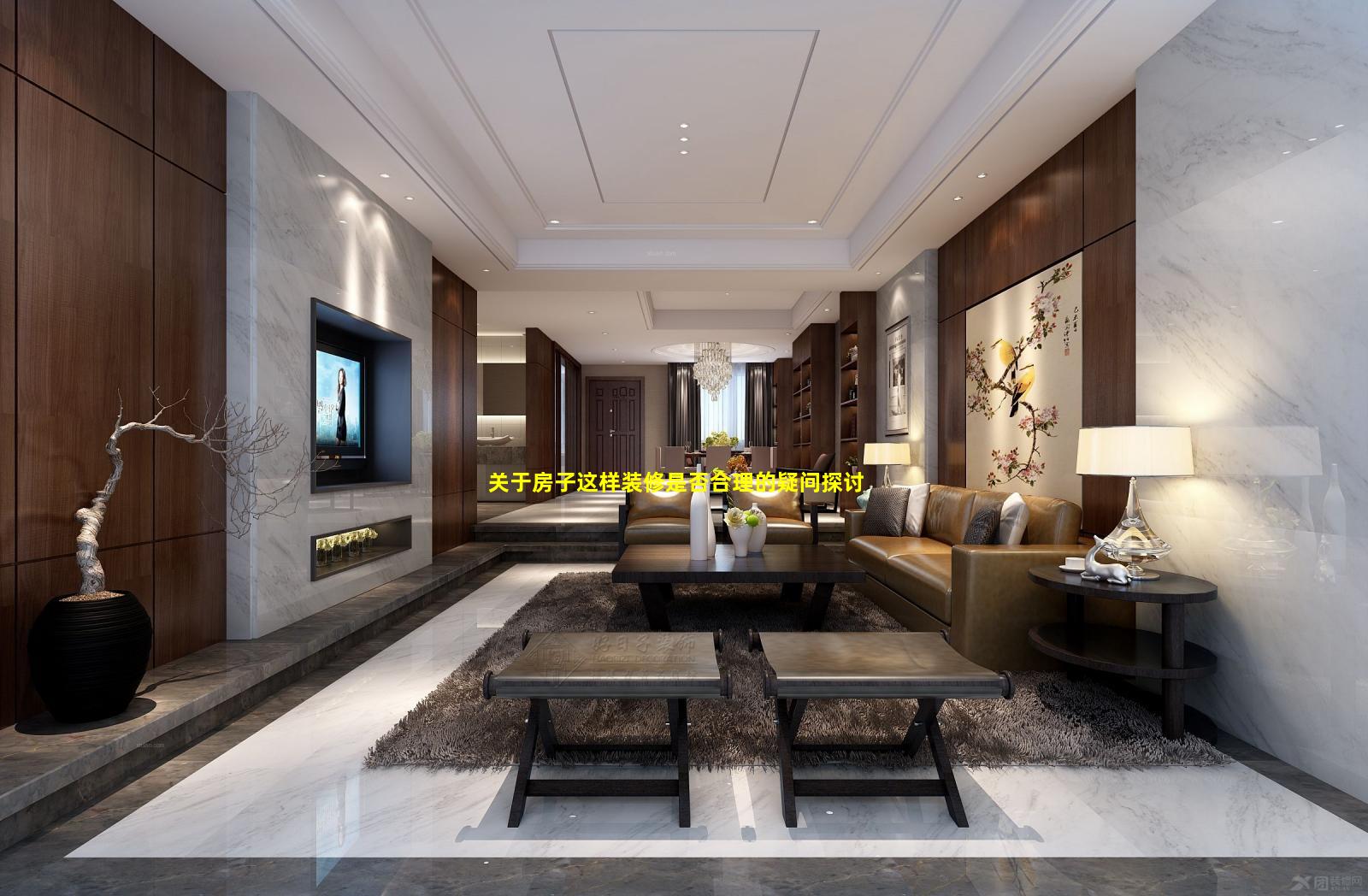





关于房子装修合理性的疑问探讨
房屋装修是一项重大的投资,需要仔细考虑和规划。在装修过程中,可能会出现一些疑问,影响装修的合理性。本文将探讨一些常见的装修疑问,并提供合理的解决方案。
疑问 1:开放式厨房是否合理?
优点:开放式厨房营造出宽敞通透的空间感,方便与家人或客人互动。
缺点:烹饪产生的油烟和气味容易扩散到其他区域,需要良好的通风系统。
解决方案:安装高效的抽油烟机和通风系统。
考虑使用隔断或屏风来阻挡油烟扩散。
选择易于清洁的厨房表面材料。
疑问 2:主卧是否需要独立卫生间?
优点:独立卫生间提供隐私和便利,尤其是在有家庭成员的情况下。
缺点:占用更多空间,增加装修成本。
解决方案:考虑主卧面积和家庭成员数量。
如果空间有限,可以考虑使用半开放式卫生间,即卫生间与卧室之间仅用玻璃隔断。
也可以选择在主卧外设置公用卫生间。
疑问 3:是否需要安装地暖?
优点:地暖提供均匀舒适的热量,尤其适合寒冷地区。
缺点:安装成本高,后期维护费用也较高。
解决方案:考虑当地气候条件和个人需求。
如果预算充足,地暖是一个不错的选择。
也可以考虑安装局部地暖,如浴室或厨房。
疑问 4:是否需要安装中央空调?
优点:中央空调提供全屋制冷和制热,舒适度高。
缺点:安装成本高,后期维护费用也较高。
解决方案:考虑当地气候条件和个人需求。
如果预算充足,中央空调是一个不错的选择。
也可以考虑安装分体式空调,成本较低,但舒适度略差。
疑问 5:是否需要安装智能家居系统?
优点:智能家居系统提供便利性和自动化,可以远程控制电器和设备。
缺点:安装成本高,需要专业人员维护。
解决方案:考虑个人生活习惯和需求。
如果追求便利性和自动化,智能家居系统是一个不错的选择。
也可以选择安装部分智能设备,如智能音箱或智能插座。
结论房屋装修的合理性取决于个人需求、预算和生活习惯。通过仔细考虑上述疑问并提出合理的解决方案,可以打造一个既舒适又实用的居住空间。
Is This Home Renovation Reasonable? A Discussion
Introduction
Home renovations can be a significant investment, both financially and emotionally. It's important to carefully consider the scope of the project, the materials used, and the potential return on investment before making any decisions. In this discussion, we will explore the reasonableness of a particular home renovation plan and identify potential areas for improvement.
Renovation Plan
The proposed renovation plan includes the following:
Kitchen remodel with new cabinets, appliances, and countertops
Bathroom remodel with new fixtures, tile, and vanity
Addition of a sunroom
New flooring throughout the house
Exterior painting
Materials and Costs
The estimated cost of the renovation is $150,000. The materials to be used include:
Highend kitchen cabinets and appliances
Marble countertops
Porcelain tile in the bathrooms
Hardwood flooring throughout the house
Premium exterior paint
Potential Return on Investment
The potential return on investment for this renovation is estimated to be around 70%. This means that the value of the home is expected to increase by approximately $105,000 after the renovation.
Discussion Points
Scope of the Project: The scope of the renovation is extensive and includes major changes to the kitchen, bathrooms, and exterior. It's important to consider whether all of these changes are necessary and if they will significantly improve the functionality and value of the home.
Materials Used: The materials selected are highend and expensive. While they may enhance the aesthetics of the home, it's important to weigh the cost against the potential return on investment.
Return on Investment: The estimated return on investment of 70% is reasonable, but it's important to note that this is just an estimate. The actual return may vary depending on market conditions and the quality of the renovation.
Alternative Options: It may be possible to achieve a similar level of improvement with a more modest renovation plan. Exploring alternative materials and finishes could reduce the cost without sacrificing the desired outcome.
Conclusion
The proposed home renovation plan is reasonable in terms of its scope, materials, and potential return on investment. However, it's important to carefully consider the necessity of all the proposed changes and to explore alternative options that may be more costeffective. By weighing the pros and cons, homeowners can make an informed decision about whether this renovation is the right choice for their needs and budget.

Is This Home Renovation Worth It? A Discussion
Introduction
Home renovations can be a significant investment, both financially and emotionally. Before embarking on a major project, it's crucial to carefully consider whether the renovation is worth the time, effort, and expense. This discussion will explore the factors to consider when evaluating the reasonableness of a home renovation.
Factors to Consider
1. Return on Investment (ROI)
Determine the potential increase in property value after the renovation.
Consider the cost of the renovation and compare it to the estimated ROI.
Research comparable properties in the area to gauge the market value.
2. Personal Needs and Preferences
Assess whether the renovation aligns with your current and future needs.
Consider your lifestyle, family size, and any specific requirements.
Determine if the renovation will enhance your enjoyment of the home.
3. Structural Integrity and Functionality
Ensure that the renovation will not compromise the structural integrity of the house.
Consider the functionality of the new design and how it will improve the flow and usability of the space.
Address any existing issues, such as outdated electrical or plumbing systems.
4. Market Trends and Resale Value
Research current home renovation trends and determine if the proposed renovation is in line with them.
Consider the potential impact of the renovation on the resale value of the property.
Consult with real estate agents or appraisers for their insights.
5. Budget and Timeline
Establish a realistic budget and stick to it.
Consider the potential for unexpected expenses and delays.
Determine a feasible timeline for the project and plan accordingly.
6. Contractor Selection
Choose a reputable and experienced contractor who can provide references and a detailed contract.
Ensure that the contractor is licensed, insured, and has a proven track record.
Get multiple bids and compare them carefully.
Conclusion
Evaluating the reasonableness of a home renovation requires careful consideration of multiple factors. By weighing the potential ROI, personal needs, structural integrity, market trends, budget, and contractor selection, homeowners can make an informed decision about whether the renovation is worth the investment. Remember, a wellplanned and executed renovation can not only enhance your enjoyment of your home but also increase its value in the long run.
房屋装修设计指南
1. 确定风格和功能
确定房屋的整体风格,如现代、传统、工业或斯堪的纳维亚。
考虑房屋的功能,如卧室数量、浴室数量和娱乐空间。
2. 布局规划
创建一个平面图,显示房间的布局和尺寸。
优化空间利用,确保流畅的交通流线。
考虑自然采光和通风。
3. 材料选择
选择耐用且美观的材料,如地板、墙壁和天花板。
考虑材料的纹理、颜色和图案。
确保材料与房屋的整体风格相协调。
4. 色彩方案
选择一个主色调,并使用互补色和强调色来营造视觉趣味。
考虑自然光线对色彩的影响。
使用色彩来定义空间并营造氛围。
5. 照明设计
使用各种照明类型,如自然光、人工光和重点照明。
考虑照明对空间功能和氛围的影响。
安装调光器以控制照明强度。
6. 家具选择
选择与房屋风格相匹配的家具。
考虑家具的尺寸、形状和功能。
使用家具来定义空间并营造舒适感。
7. 装饰元素
使用装饰元素,如艺术品、纺织品和植物,来个性化空间。
考虑装饰元素的纹理、颜色和图案。
确保装饰元素与房屋的整体风格相协调。
8. 可持续性
选择环保材料和节能电器。
优化自然采光和通风。
考虑可再生能源,如太阳能或地热。
9. 预算和时间表
设定一个现实的预算并坚持下去。
创建一个时间表并跟踪进度。
考虑聘请专业人士,如室内设计师或承包商,以确保项目的顺利进行。
10. 享受成果
一旦装修完成,花时间欣赏你的新空间。
根据需要进行调整,以确保空间满足你的需求和品味。